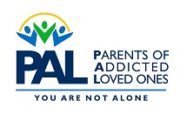By Jim Kreitler, PAL Board Chair
Now that the Holidays are receding in my consciousness, I looked back to see how I handled them this year. It’s my favorite time of year, but for some it can be stressful, hectic, sad, or lonely. My wife and I had a quieter than normal Holiday as our adult children and their families were not able to visit. We decided to have a gift-free Christmas and focus on the reason for the season and found that our stress was reduced enormously.
Life in general can be difficult throughout the year. Financial pressure, the loved one who is struggling, our relationships and responsibilities can cause us to emotionally burn out. This in turn can result in actions and responses that we regret and can make things worse.
One technique for managing the hectic and emotional aspects of life is developing a mindfulness practice. Mindfulness is an exercise in non-judgmental self-awareness and emotional self-regulation. In simple practice we take time out of our busy day to slow down, sit quietly and practice being in the present and observing ourselves and our world.
Mindfulness is being used by many counselors in diverse therapeutic situations and interventions. Research has shown it reduces stress, improves physical/emotional health and increases attention span. Closely associated with meditation and yoga, it requires no formal training and has very simple instructions.
Try this daily for a couple weeks and see what improvement you experience. While mindfulness can be done anywhere at any time, in the beginning it is best to find a quiet, comfortable place where you won’t be bothered. Sit in a comfortable position, feet on the floor, back straight, hands on our laps (palms turned up or down). Begin by closing your eyes and breathing slowly in through your nose and out through your mouth. Focus on your breathing and keep it relaxed and steady. After a bit move your focus to your body and anything you can feel. Observe your feet touching the floor, your bottom on the seat, and tightness in your stomach. Also, listen to any sounds that are present. You might hear the air-conditioner, a bird chirping or a car outside.
As you develop your practice try and not judge or fix anything you experience, just observe. If you find your thoughts drift to concerns about work or your busy day, just focus back on your breathing until you are relaxed and present again. As you get better at just slowing down and being aware of yourself in this intimate way you might try to relax your body with intention. Start at your toes—tighten then relax them. Prolong the relaxation as you tighten and then relax your legs. I love when I get to my abdomen and I realize how tight it is. I relax it as much as I can, and it feels great.
What we are learning is how to both take a break and relax our bodies and minds but also to be self-aware of our emotional/physical state. When I am out and about, sometimes I react before I even think or realize I’m upset. Steven Covey, the author of 7 Habits of Highly Effective People, writes of the space between stimulus and response. He believes this is where free will resides. As we discover this space and lengthen it, we have an opportunity to choose a more appropriate response than when we simply react. In my experience, I now see when a situation is making me uncomfortable and I can leave or decide to not say anything. In the past I would have a reaction that I would later regret.
When life’s stressors make you crazy, learning how to relax and escape for a moment can be refreshing. The self-awareness will help your handle situations better and not make things worse. And, in my experience God speaks to me in these quiet times. I feel His presence and love in a way that is comforting and real. I wish you good luck in your mindfulness practice.

Comments are closed.